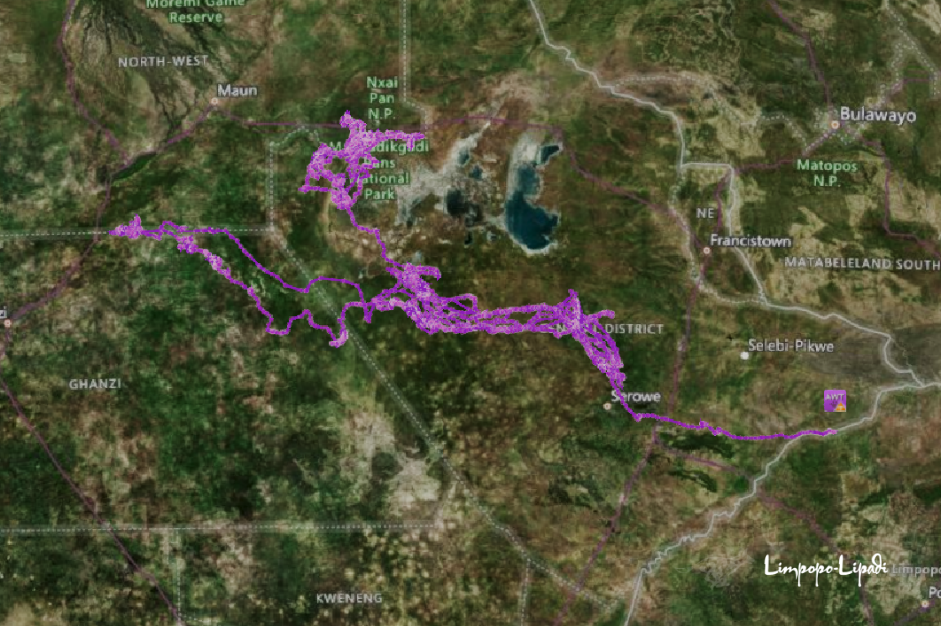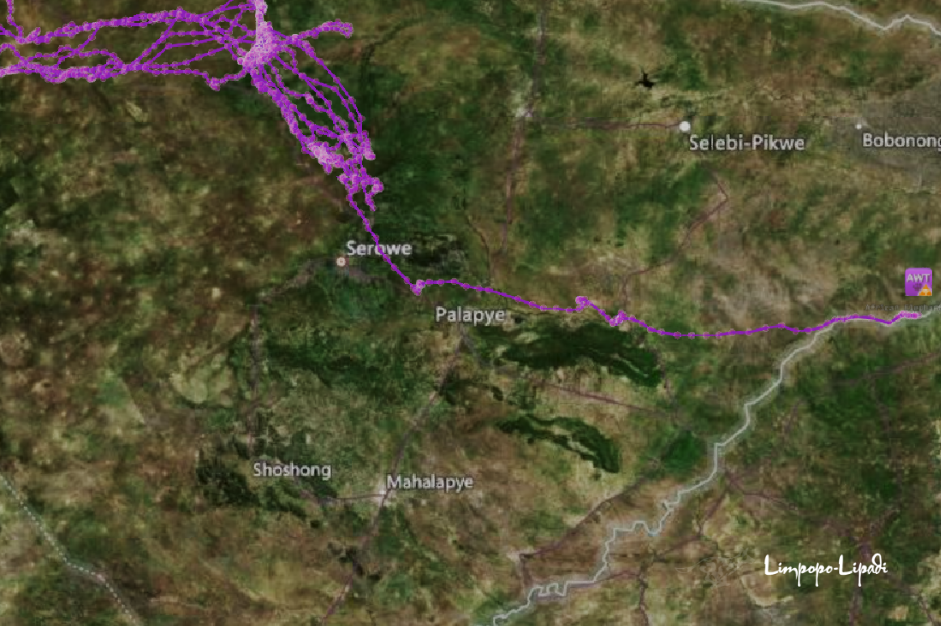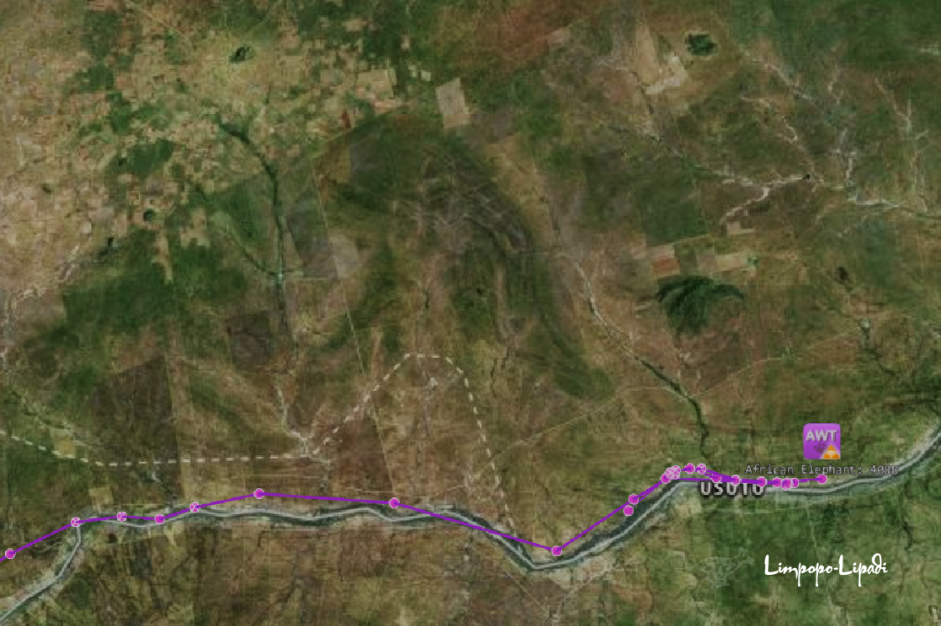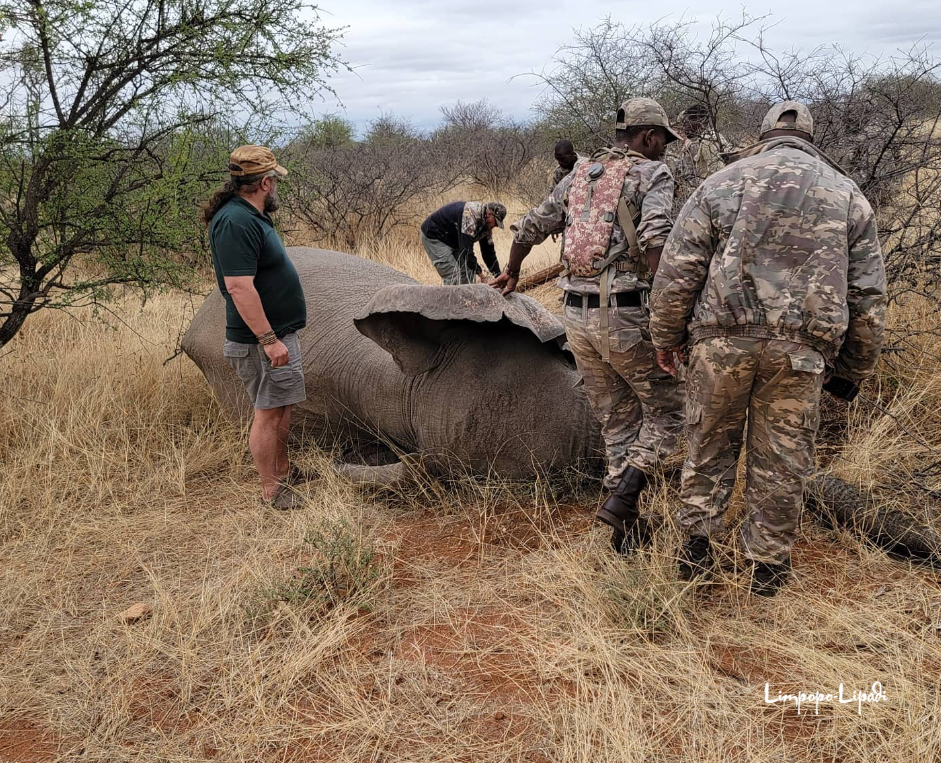When we did the initial planning for the 2020 Elephant Translocation, the DWNP indicated that one of the prerequisite permit conditions would be that we would need to collar at least 20% of the elephant bulls we released, for monitoring purposes. Another big factor in our planning was the preposed release site: It had to be far enough away from Limpopo-Lipadi, as to discourage the elephants from simply walking back, and breaking into the Reserve again. That is why we suggested Makgadigadi NP as a good release site. It was far enough away, we reckoned, at 450km in a straight line, or 650km by road to convince any elephant of not returning to L-L.
Soon after the release it became apparent that we would see widely divergent behaviour from all the collared bulls, as they settled into their new environment, and formed relationships and shared knowledge with the resident elephants of Makgadigadi MP. Right from the start it was clear that “Elephant 4088” was a highly adventurous individual. He was one of the first bulls to go and drink water in the Boteti river at Xhumaga, and to move South of the pans to explore the hinterland towards Orapa and Lethlakane. By December of 2020 he walked to within 20 kilometres from Serowe, and we joked that he was on his way back. Eventually, he did turn back towards the Pans, and he spent most of the summer to the South of the Pans, regularly drinking from the Boteti. In late April his wandering spirit once again compelled him to travel far. This time to the West. All the way to Kuki Gate, near Ghanzi. Once again he headed back to the Pans, and for a short while he spent time along the Boteti river West of Lethlakane and Orapa, before he decided he had seen enough of the flat country.
In early September we saw that he was heading towards Serowe again, but this time he didn’t stop short. He passed Serowe and headed South towards Palapye, using the watercourse of the Lotsane river. The Lotsane has its source in the sandveld, at the eastern fringes of the Kalahari Desert. It flows roughly eastwards, passing close to Serowe and through Palapye and flanking the feet of the Tswapong Hills on their northern side near Maunatlala. Finally, it joins the left bank of the Limpopo River at the border with South Africa. Once in the Limpopo valley he was in the home straight, and it was clear that this Bull was coming home to Limpopo-Lipadi. On the 2nd of October he entered the River area at Limpopo-Lipadi and moved straight East and exited again at the Saambou corner, and moved North along our eastern border, past Gate 3, and then onwards in the direction of Mathathane.
A week later he was back at our eastern border and was marching up and down the fence, south of Gate 3. On Monday 11 October I gave an instruction to the APU to open the gate for this bull, as it was clear that he was determined enough to destroy the fence to get into the Reserve. The following evening at about 19:00 he walked back into the Reserve, through Gate 3. It was a mammoth journey of far more than a thousand kilometres.
When we were busy with Phase 3 of the Lion Translocation, we had an opportunity to dart him and remove his collar. This collar was then deployed and fitted to one of the senior Elephant cows in our breeding herd.

Figure 1: The Bull’s movement from the 13th of August 2020 till the 2nd of October 2021

Figure 2: The route past Serowe and Palapye

Figure 3: Zoomed image of the last part of the bulls journey

Figure 4: Collaring the cow with the “4088” collar
The Bull has been notched with 4 notches to both tusks and is easily recognisable. So, when you see him, raise your cap in a friendly “Hello”, because if there is one elephant bull that deserves to live in Limpopo-Lipadi, this is him.
Welcome home, Boy!
